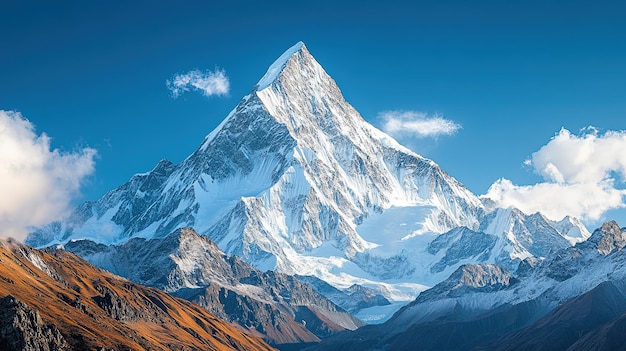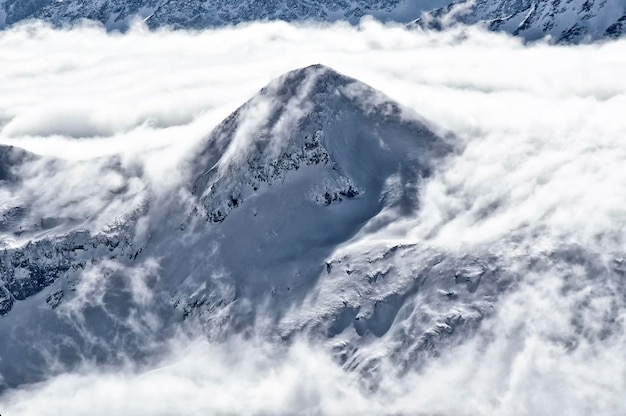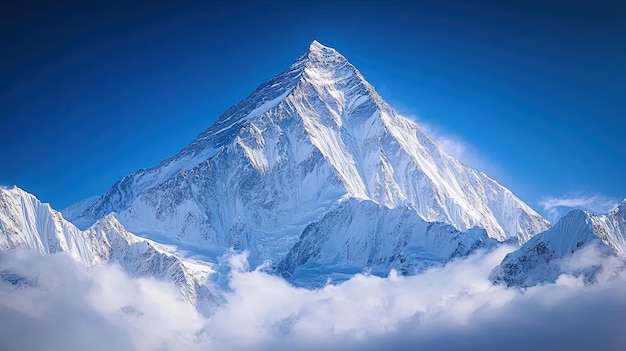Avoiding Altitude Sickness on K2: How to Acclimatize and Stay Safe
Introduction
Climbing K2, the second-highest mountain in the world, is a challenging endeavor, and avoiding altitude sickness is crucial for safety. This guide will help you understand how to acclimatize, stay hydrated, use oxygen effectively, and recognize symptoms of altitude-related illnesses to ensure a safer climb.
Avoiding Altitude Sickness on K2: How to Acclimatize and Stay Safe

Effects of High Altitude on the Body
At high altitudes, the air pressure drops, reducing oxygen availability. This can lead to increased heart rate, faster breathing, and changes in blood composition as the body tries to adapt. These physiological changes are part of acclimatization, which typically takes days to weeks, helping reduce the risk of altitude sickness.
Acclimatization Schedules and Strategies
A typical acclimatization schedule for K2 includes:
Spending 2-3 days at Base Camp (5,400 m) for initial rest.
Making rotations to higher camps, such as ascending to Camp 1 (6,000 m) for an overnight stay, then descending, with similar patterns for Camp 2 (6,700 m) and Camp 3 (7,200 m).
Ensuring no more than a 300-meter increase in sleeping altitude per day above 3,000 meters, with rest days every few days.
This gradual approach helps your body adapt to lower oxygen levels, reducing the risk of altitude sickness.
Hydration and Oxygen Use
Stay hydrated by drinking water regularly, consuming electrolyte-rich drinks, and monitoring urine color for signs of dehydration. Avoid alcohol and caffeine. Many climbers use supplemental oxygen from Camp 3 or 4 onwards to improve performance and reduce illness risk, though some attempt climbs without it, requiring exceptional fitness.
Recognizing and Managing Symptoms
Watch for AMS symptoms like headaches and nausea, HAPE signs like coughing and shortness of breath, and HACE indicators like confusion. If symptoms appear, rest and hydrate; for severe cases, descend immediately and seek medical help. Medications like acetazolamide can aid prevention, but consult a doctor.

Survey Note: Comprehensive Analysis on Avoiding Altitude Sickness on K2
This section provides a detailed exploration of avoiding altitude sickness on K2, covering all aspects from physiological effects to practical strategies, ensuring climbers are well-prepared for their expedition. The information is based on extensive research into altitude sickness, acclimatization practices, hydration needs, oxygen use, and symptom management, specifically tailored for the challenging climb of K2.
Understanding Altitude Sickness: A Detailed Overview
Altitude sickness, also known as acute mountain sickness (AMS), occurs when the body struggles to adapt to reduced oxygen levels at high altitudes, typically above 2,500 meters. For K2, with its summit at 8,611 meters, the risk is significantly heightened. It encompasses a spectrum of conditions, including AMS, high altitude pulmonary edema (HAPE), and high altitude cerebral edema (HACE), each with varying severity.
AMS is the mildest form, with symptoms like headache, nausea, vomiting, fatigue, dizziness, and insomnia, usually appearing within 6-12 hours of ascent.
HAPE involves fluid accumulation in the lungs, leading to shortness of breath at rest, coughing (potentially with pink or frothy sputum), chest tightness, rapid heartbeat, and cyanosis (blue lips and nails), and can be life-threatening if untreated.
HACE is the most severe, involving brain swelling, with symptoms including confusion, disorientation, loss of coordination, slurred speech, memory loss, seizures, and potentially coma.
Understanding these conditions is vital for climbers, as early recognition can prevent progression to severe forms, especially on a challenging climb like K2.
Effects of High Altitude on the Body: Physiological Responses
At high altitudes, several physiological changes occur due to lower air pressure and reduced oxygen availability:
Respiratory System: The body increases breathing rate to intake more oxygen, a response to hypobaric hypoxia.
Cardiovascular System: Heart rate increases to pump more oxygenated blood to tissues, and blood pressure may rise.
Blood Composition: The body produces more red blood cells to enhance oxygen-carrying capacity, a process that takes days to weeks.
Kidney Function: Increased urination occurs as the body excretes bicarbonate to adjust blood pH, aiding in acclimatization.
Sleep Disturbances: Low oxygen levels can lead to insomnia or disrupted sleep, affecting recovery and performance.
These changes are part of the acclimatization process, which is essential for climbers to adapt gradually, reducing the risk of altitude sickness. Research from sources like Cleveland Clinic: Altitude Sickness highlights these adaptations, emphasizing the need for time at altitude.

Acclimatization Schedules for K2: Practical Itineraries
Acclimatization is critical for avoiding altitude sickness on K2, and a structured schedule is necessary. Based on typical climbing itineraries, here’s a detailed plan:
| Stage | Altitude (m) | Duration | Action |
| Arrival and Rest | 508 (Islamabad) | 1-2 days | Rest, fly to Skardu, organize gear. |
| Trek to Base Camp | Up to 5,400 | 6-7 days | Gradual ascent, rest days included. |
| Base Camp Acclimation | 5,400 | 2-3 days | Rest, light activity, monitor symptoms. |
| First Rotation | To Camp 1 (6,000) | 2 days | Ascend, overnight, descend to Base Camp. |
| Rest at Base Camp | 5,400 | 1-2 days | Recover, hydrate, prepare for next rotation. |
| Second Rotation | To Camp 2 (6,700) | 2 days | Ascend, overnight, descend to Base Camp. |
| Rest at Base Camp | 5,400 | 1-2 days | Further acclimation, assess fitness. |
| Third Rotation | To Camp 3 (7,200) | 2 days | Ascend, overnight, descend to Base Camp or 2. |
| Summit Preparation | Varies | Several days | Rest, final acclimation, weather assessment. |
| Summit Attempt | To 8,611 (Summit) | Variable | Ascend from Camp 4 (8,000 m), use oxygen if needed. |
This schedule, derived from climbing itineraries like Madison Mountaineering: K2 Expedition, ensures climbers do not increase sleeping altitude by more than 300 meters per day above 3,000 meters, with rest days every few days to allow physiological adaptation.

Hydration Strategies at High Altitude: Maintaining Fluid Balance
Hydration is vital at high altitudes due to increased water loss from dry air and higher respiration rates. Research from HydraPak: High Altitude Hydration indicates:
The body loses water faster due to increased breathing and dry conditions.
Diuretic effects from medications like acetazolamide can increase urination.
Strategies include:
Drink water regularly, aiming for at least 3-4 liters per day, even if not thirsty.
Carry a water bottle and sip frequently to maintain hydration.
Consume electrolyte-rich drinks or snacks, such as sports drinks or electrolyte tablets, to replace lost salts and minerals.
Monitor urine color; pale yellow indicates good hydration, while dark yellow suggests dehydration.
Avoid alcohol and caffeine, as they can exacerbate dehydration.
These practices help maintain fluid balance, reducing the risk of altitude sickness.
Oxygen Use on K2: Enhancing Performance and Safety
Supplemental oxygen is commonly used on K2, particularly for the summit push, to improve performance and reduce the risk of altitude-related illnesses. Research from Explorersweb: K2 Oxygen Controversy shows:
Many climbers start using oxygen from Camp 3 (7,200 m) or Camp 4 (8,000 m) onwards.
Oxygen improves perceived altitude, reducing the risk of acute altitude illness, hypothermia, and frostbite.
Flow rates typically range from 2-4 liters per minute, with higher rates for rest periods.
However, some climbers attempt no-oxygen ascents, requiring exceptional physical condition and careful planning, as noted in Mountain Planet: Climb K2 Without Oxygen. This approach is controversial, with purists advocating for it, while others see oxygen as a safety measure, highlighting the debate within the climbing community.
Recognizing and Managing Altitude-Related Illnesses: Early Intervention
Early recognition of symptoms is crucial for managing altitude-related illnesses:
AMS Symptoms: Headache, nausea, vomiting, fatigue, dizziness, and insomnia. Treat with rest, hydration, and over-the-counter pain relievers like ibuprofen. If symptoms persist, descend.
HAPE Symptoms: Shortness of breath at rest, coughing (with or without pink sputum), chest tightness, rapid heartbeat, cyanosis. Immediate descent is necessary, with oxygen if available, and medications like nifedipine as adjuncts, per CDC Yellow Book 2024.
HACE Symptoms: Confusion, disorientation, loss of coordination, slurred speech, memory loss, seizures, coma. Immediate descent and medical treatment with oxygen and dexamethasone are critical, as outlined in WebMD: Altitude Sickness.
Descent is the most effective treatment, with a decrease of at least 300 meters recommended until symptoms improve. Medications like acetazolamide can prevent AMS, but consult a doctor before use, as per NHS: Altitude Sickness.
FAQs: Addressing Common Concerns
To address common queries, here’s a detailed FAQ section:
- What is the best way to prevent altitude sickness on K2?
Follow a structured acclimatization schedule with gradual ascent and rest days. Stay hydrated, eat well, and consider medications like acetazolamide under medical advice, as suggested by REI Expert Advice: Altitude Sickness.
- At what altitude does altitude sickness typically occur on K2?
Symptoms can start above 2,500 meters, but on K2, they are more common above 4,000 meters, especially during ascents to higher camps, per Better Health Channel: Altitude Sickness.
- Is it safe to climb K2 without using supplemental oxygen?
It’s possible but highly risky, requiring exceptional fitness and experience. Most climbers use oxygen for safety, with debates around purist ascents, as noted in Explorersweb: K2 Oxygen Controversy.
- How do I know if I have AMS or just a headache from dehydration?
If you have a headache with other symptoms like nausea at high altitude, it’s likely AMS. Hydrate well and consider descending if symptoms persist, per Cleveland Clinic: Altitude Sickness.
- Can I continue climbing if I have mild symptoms of AMS?
It’s generally not recommended; rest at the current altitude or descend until symptoms resolve for safety, as advised by CDC: Travel to High Altitudes.
Conclusion: Prioritizing Safety on K2
Avoiding altitude sickness on K2 requires thorough preparation, understanding physiological responses, and adhering to safety protocols. By following acclimatization schedules, maintaining hydration, using oxygen when necessary, and recognizing early signs of illness, climbers can significantly reduce risks. Safety should always be the top priority, ensuring a successful and healthy expedition on this formidable mountain.






